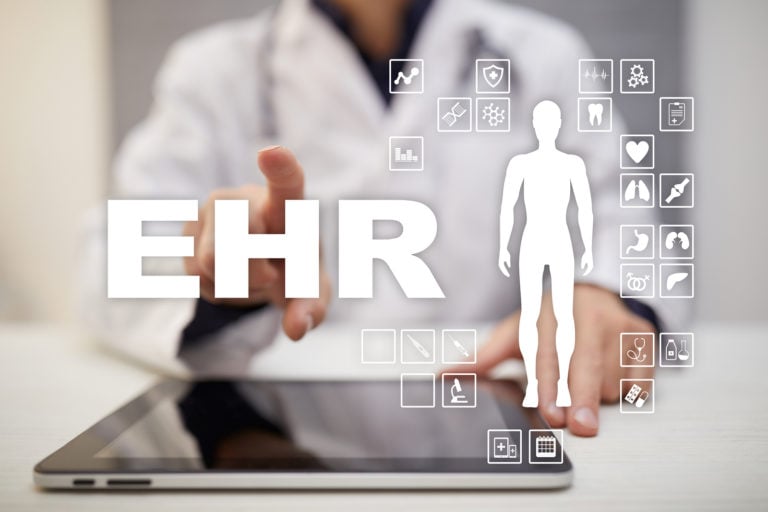What is Meaningful Use?

Technology is an essential part of healthcare. One of the most significant advanced in healthcare is the use of electronic health records (EHRs). Meaningful Use means that electronic health record technology is used in a “meaningful” way, and ensures that health information is shared and exchanged to improve patient care. According to the CDC, there are five “pillars” of health outcomes that support the concept of Meaningful Use:
- Improving quality, safety, and efficiency while reducing health disparities
- Engaging patients and families
- Improving care coordination
- Improve public health
- Ensure privacy for personal health information
Meaningful Use refers to the specific, purposeful use of EHR technology to improve patient care. The concept ensures that healthcare providers are not just storing data electronically, but are actively using that data to enhance care delivery, reduce errors, and improve health outcomes. It was introduced as part of the Health Information Technology for Economic and Clinical Health (HITECH) Act in 2009.
According to the Centers for Disease Control and Prevention (CDC), five core goals—referred to as the "pillars" of Meaningful Use—form the foundation of this initiative:
1. Improve Quality, Safety, and Efficiency While Reducing Health Disparities
EHRs help providers make better clinical decisions by offering features like clinical decision support tools, reminders, and alerts. For instance, if a patient with diabetes visits their primary care provider, the system may alert the physician to check their most recent HbA1c levels or recommend an annual foot or eye exam.
Moreover, EHRs can help reduce disparities in care. A community clinic serving low-income populations might use EHR reports to identify patients overdue for cancer screenings, enabling targeted outreach to underserved groups.
2. Engage Patients and Families
Patient engagement tools, such as secure patient portals, empower individuals to be more involved in their healthcare. Through these portals, patients can view their lab results, message their providers, request prescription refills, and schedule appointments.
For example, a parent of a child with asthma may use the portal to monitor their child's peak flow readings and medication usage, allowing for more informed conversations during pediatric visits.
3. Improve Care Coordination
When a patient is transferred from a hospital to a rehabilitation facility, EHRs enable seamless communication between care teams. Shared access to the patient’s history, medications, allergies, and discharge summaries reduces the risk of medical errors and duplicative testing.
For instance, if a patient was prescribed a specific antibiotic in the hospital, the rehab team can view the prescription history instantly and avoid prescribing a conflicting medication.
4. Improve Population and Public Health
EHRs enable providers to contribute data to public health registries and disease surveillance systems. This functionality became especially crucial during the COVID-19 pandemic, when accurate and timely data was essential for tracking infections, hospitalizations, and vaccination rates.
A public health agency may receive automated reports from clinics about flu vaccinations or positive test results for notifiable diseases like tuberculosis, enhancing their ability to respond to outbreaks.
5. Ensure Privacy and Security of Patient Information
With digital health data, protecting patient privacy is paramount. Meaningful Use requires that providers implement safeguards such as encryption, access controls, and audit trails. This helps ensure that sensitive information—like mental health records or HIV status—is only accessed by authorized personnel.
Compliance with HIPAA regulations is mandatory, and EHR systems must be certified to meet stringent privacy and security criteria.
Incentives and Requirements
To promote adoption, the Centers for Medicare & Medicaid Services (CMS) launched incentive programs for eligible professionals and hospitals. These programs provide up to $44,000 for Medicare providers and $63,750 for Medicaid providers over several years, provided they demonstrate meaningful use of EHR systems.
To qualify, providers must meet a series of objectives set forth in three progressive stages:
Stage 1 focused on data capture and sharing (e.g., using CPOE, maintaining up-to-date problem lists, and implementing drug interaction checks).
Stage 2 emphasized advanced clinical processes (e.g., online access to health information, secure messaging, and medication reconciliation).
Stage 3 targeted improved health outcomes, requiring providers to use certified EHRs to support quality improvement and coordinated care.
Failing to adopt EHRs may result in penalties, such as reduced Medicare/Medicaid reimbursement rates for non-compliant providers.
While there are arguably pros and cons to electronic charting, the bottom line is that they were designed to improve communication, safety, efficiency, and patient care outcomes. This, in turn, helps to reduce healthcare costs which not only effects government agencies but healthcare consumers as well.
